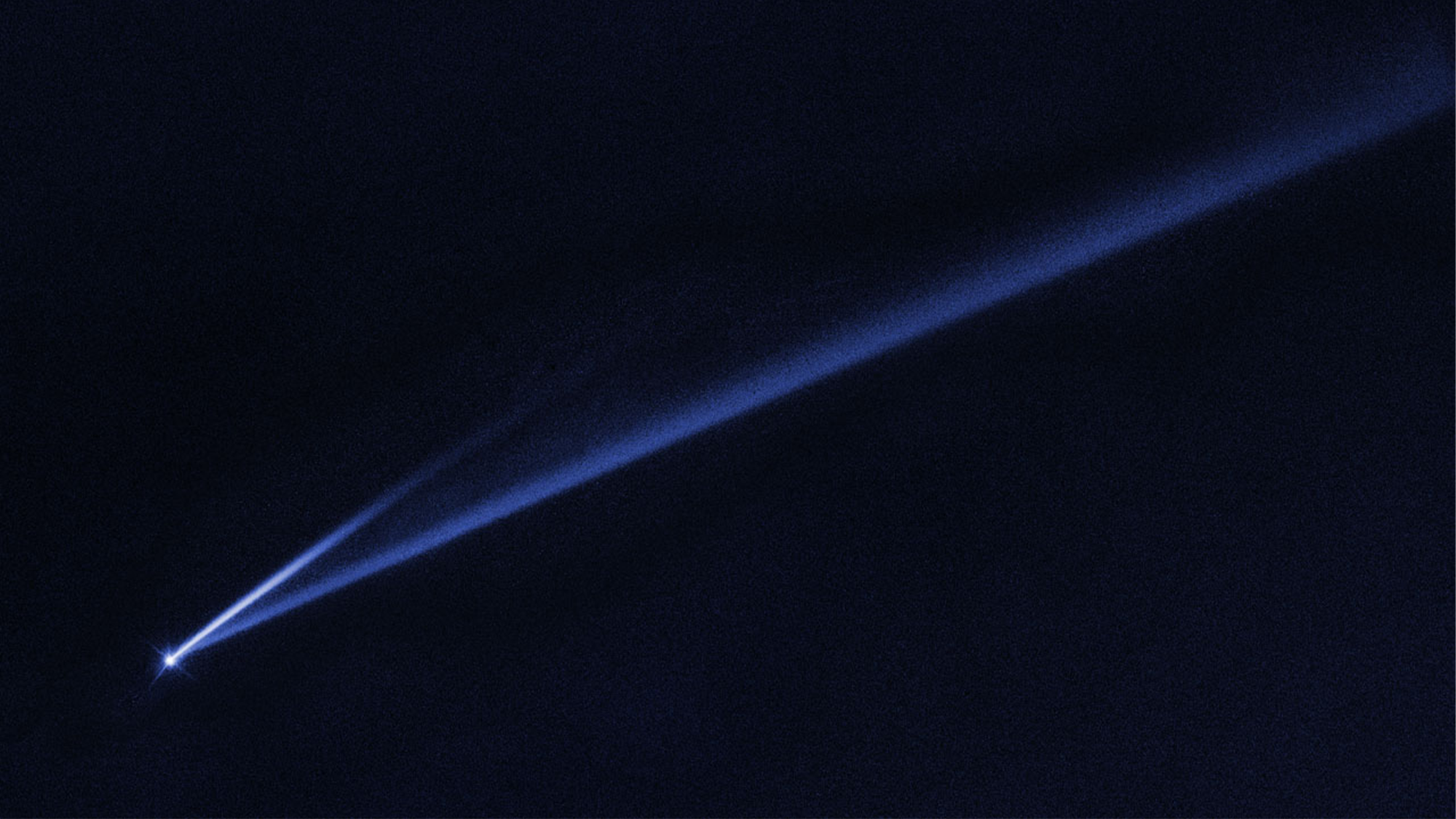

An asteroid roughly the size of a 20-story building—that’s big enough to wipe out a whole city full of skyscrapers—is expected to fly between the Earth and the moon on March 24th and March 25.
Discovered only a month ago, the asteroid known as 2023 DZ2 will pass within 320,000 miles of the moon on Saturday and then zip by the Indian Ocean at roughly 17,500 miles per hour. It will be closest to Earth on March 25 at about 3:50 PM EDT.
[Related: DART left an asteroid crime scene. This mission is on deck to investigate it.]
This close encounter—by planetary standards—will give astronomers a chance to study this space rock from a bit over 100,000 miles away. This distance is only half the distance from the Earth to the moon, which means the newly discovered asteroid is visible through binoculars and telescopes in the right locations. Those in the Northern Hemisphere will have the best chance to spot it through telescopes during the evening on March 24.
“There is no chance of this ‘city killer’ striking Earth, but its close approach offers a great opportunity for observations,” the European Space Agency’s planetary defense chief Richard Moissl said in a statement, according to the Associated Press.
NASA further confirmed this message of calm on Twitter earlier this week, adding that 2023 DZ2’s close approach will help astronomers to learn more about asteroids. “Astronomers with the International Asteroid Warning Network are using this close approach to learn as much as possible about 2023 DZ2 in a short time period – good practice for #PlanetaryDefense in the future if a potential asteroid threat were ever discovered,” NASA wrote in Tweet.
For a little while, 2023 DZ2 posed a very slight risk of impacting Earth on March 27, 2026. Lucky for Earthlings, it was removed from the Sentry Risk Table as of March 21, 2023.
The Virtual Telescope Project will also provide a live webcast of 2023 DZ2’s close approach.
A group of astronomers at the Roque de los Muchachos Observatory in Spain discovered the asteroid in late February and have been studying the space rock’s size, orbit, and anticipated trajectory. It’s estimated to be between 140 and 310 feet in diameter.
A different asteroid that was also discovered in February named 2023 DW possibly carries a larger risk to Earth down the road. The European Space Agency put it on the top of its Risk List and predicts a 1 in 607 chance that it could impact Earth. Estimates say a collision could occur around February 14, 2046, but it could also occur on subsequent Valentine’s Days between the years 2047 and 2051.
[Related: NASA’s first attempt to smack an asteroid was picture perfect.]
In the meantime, scientists are learning more about asteroids following NASA’s successful DART mission in September, which smashed a car-sized spacecraft into an asteroid named Dimorphos in an attempt to knock it off its orbit. In September 2022, NASA’s planetary defense officer Lindley Johnson told PopSci that DART is a “significant milestone” in humanity’s capabilities to protect the planet from such a dark outcome.
“This is the first time that humankind acquired the knowledge and the technology to start to rearrange things a little bit in the solar system, if you will, and make it a more hospitable place for life,” Johnson said.
The European Space Agency’s Hera will soon follow DART’s trail to study its aftermath in more detail. That mission is scheduled for an October 2024 departure from Cape Canaveral in Florida, on the wings of a SpaceX Falcon 9 rocket. Its itinerary as of March 2023 has it arriving at Didymos and its small moonlet Dimorphos and in late 2026 for about six months of sightseeing. If the conditions allow, Hera will try to make a full landing on Didymos.
